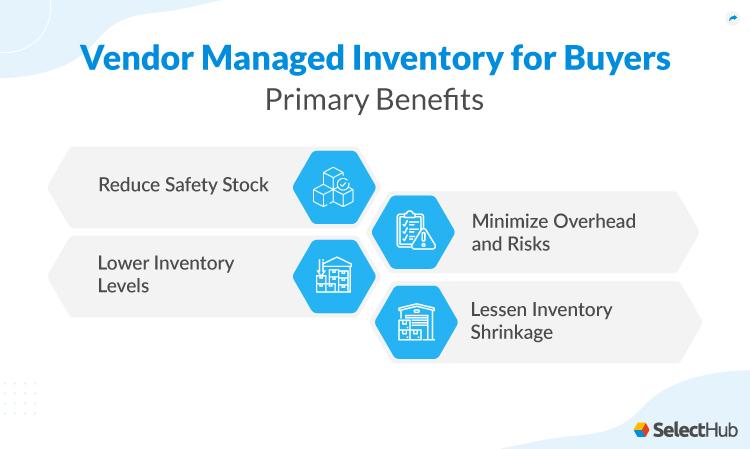In the intricate world of logistics, a new game-changing strategy is taking center stage: Vendor-Owned Inventory (VOI). This innovative approach to managing transport and shipping is revolutionizing the way businesses handle their supply chain operations. Join us as we dive into the fascinating world of VOI logistics and explore how this method is paving the way for a more efficient and cost-effective way of moving goods from point A to point B.
Understanding the Concept of Vendor-Owned Inventory (VOI)
Vendor-Owned Inventory (VOI) refers to a supply chain management strategy where a supplier or vendor owns and manages the inventory that is stored at the customer’s location. This concept allows the vendor to take on more responsibility for the inventory, ensuring that the customer has access to the products they need without having to worry about managing the inventory themselves. VOI can help streamline the supply chain process and improve efficiency for both the vendor and the customer.
With VOI, the vendor is responsible for replenishing the inventory, ensuring that the right products are always in stock, and managing any returns or exchanges. This can help reduce the customer’s inventory carrying costs and free up space in their facilities. Additionally, VOI can lead to better inventory management practices, improved product availability, and increased collaboration between the vendor and the customer. Overall, Vendor-Owned Inventory can be a beneficial strategy for businesses looking to optimize their supply chain operations and improve customer satisfaction.

Maximizing Efficiency in VOI Logistics
When it comes to , one key factor to consider is the transportation and shipping of goods. By partnering with reliable logistics companies, vendors can ensure that their inventory is transported in a timely and cost-effective manner. Utilizing advanced tracking systems and real-time updates can help vendors keep a close eye on their inventory, ensuring that everything is on track for delivery.
Another crucial aspect of VOI logistics is optimizing warehouse processes. Implementing automated systems for inventory management can help vendors streamline their operations and reduce errors. By creating a well-organized system for picking, packing, and shipping orders, vendors can improve their overall efficiency and customer satisfaction. Additionally, utilizing data analytics to forecast demand and adjust inventory levels accordingly can help vendors stay ahead of the curve and prevent stockouts.

Key Considerations for VOI Transport and Shipping
When it comes to managing Vendor-Owned Inventory (VOI), logistics, transport, and shipping play a crucial role in ensuring smooth operations and customer satisfaction. It is essential to consider the following key factors to optimize your VOI transportation and shipping processes:
- Carrier Selection: Choose reliable carriers with a proven track record for timely deliveries and secure handling of goods.
- Shipping Costs: Evaluate shipping costs from different carriers and negotiate rates to minimize expenses and maximize profitability.
- Packaging: Use durable and eco-friendly packaging materials to protect your inventory during transit and reduce environmental impact.
| Consideration | Description |
|---|---|
| Carrier Selection | Choose reliable carriers for on-time deliveries. |
| Shipping Costs | Minimize expenses by negotiating rates. |
| Packaging | Protect inventory with eco-friendly materials. |

Strategies for Successful Management of Vendor-Owned Inventory
When managing Vendor-Owned Inventory (VOI), it’s crucial to implement effective strategies to ensure smooth logistics, transport, and shipping processes. One key strategy is to establish clear communication channels with vendors to stay updated on inventory levels and delivery schedules. This ensures timely replenishment and prevents stockouts that can disrupt operations.
Another important strategy is to conduct regular audits of vendor-owned inventory to monitor product quality, shelf life, and overall condition. This helps in identifying slow-moving or obsolete items that can be returned or liquidated to free up storage space and working capital. By maintaining a proactive approach to managing VOI, businesses can optimize inventory levels, reduce carrying costs, and enhance overall supply chain efficiency.
Concluding Remarks
In conclusion, Vendor-Owned Inventory (VOI) is a modern approach to logistics, transportation, and shipping that nurtures collaboration and efficiency between vendors and customers. By incorporating VOI into your supply chain strategy, you can streamline operations, reduce costs, and improve overall customer satisfaction. As the logistics landscape continues to evolve, embracing innovative practices like VOI is essential for staying competitive in the market. So, why not consider incorporating VOI into your business model today and witness the transformative power it can bring to your operations. Happy shipping!
